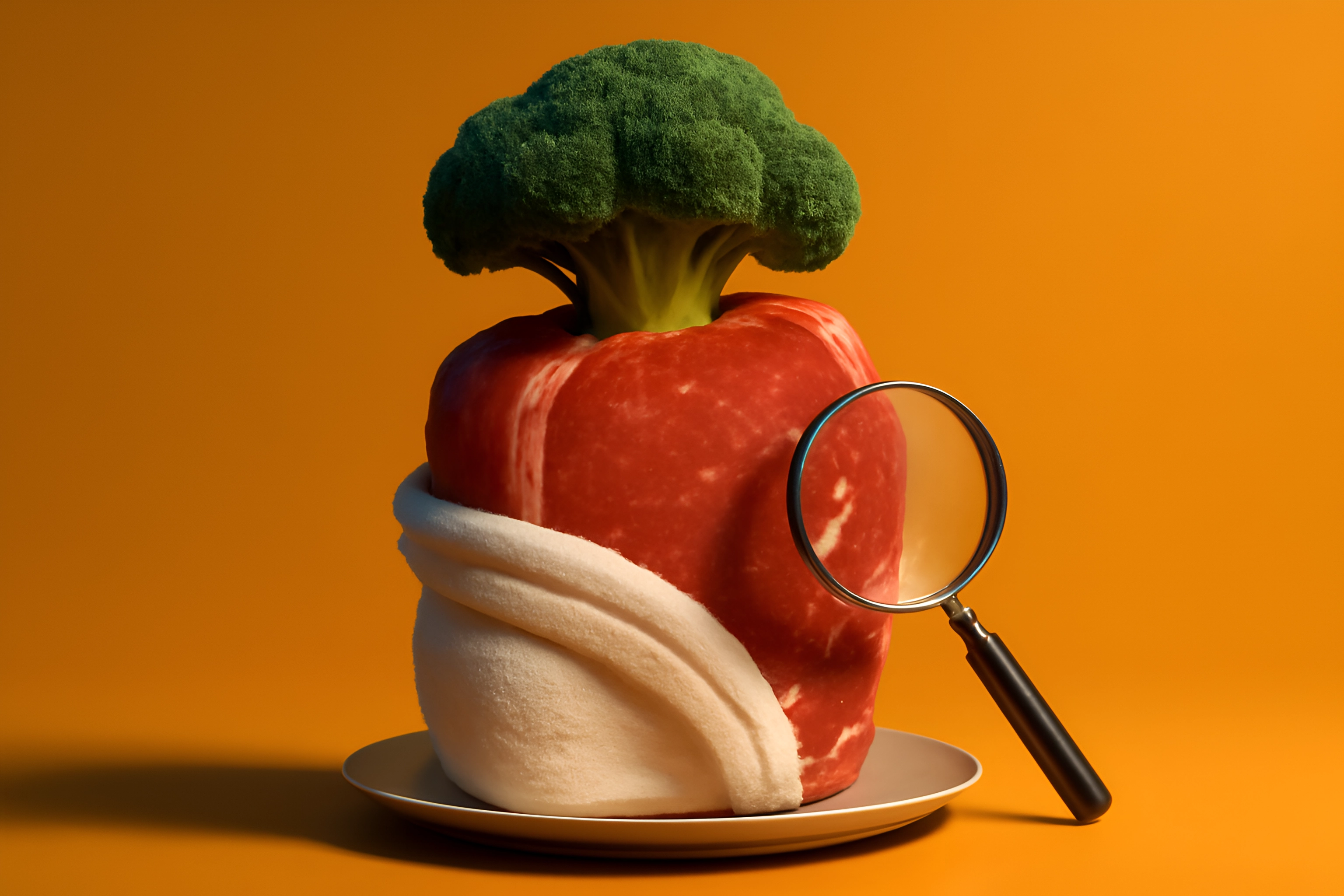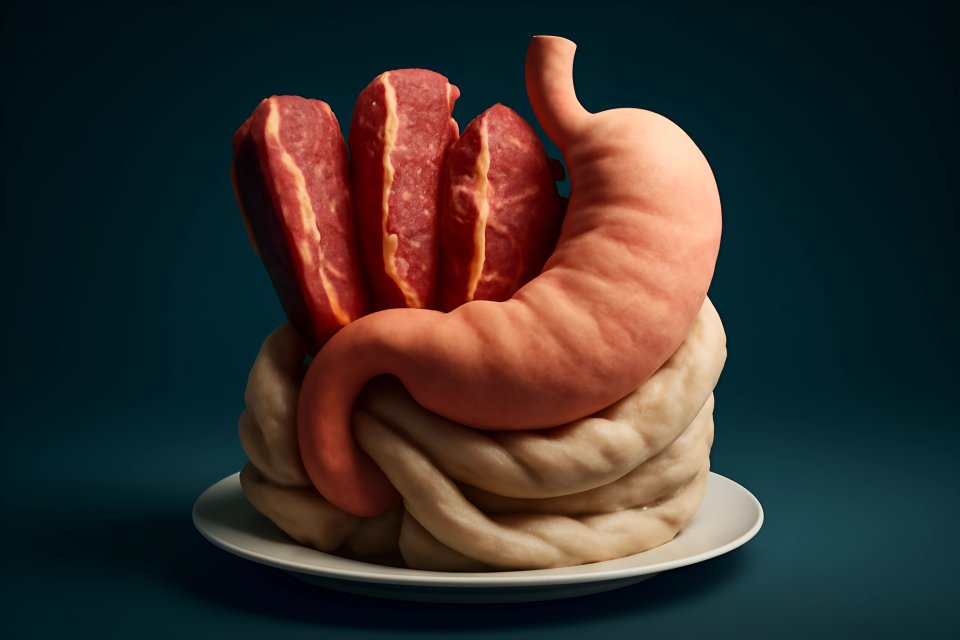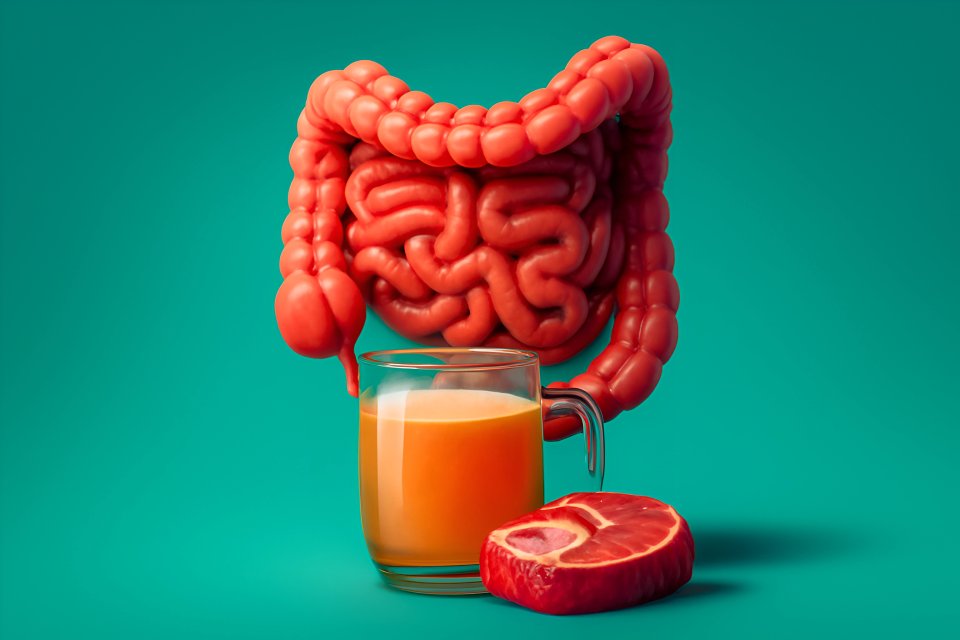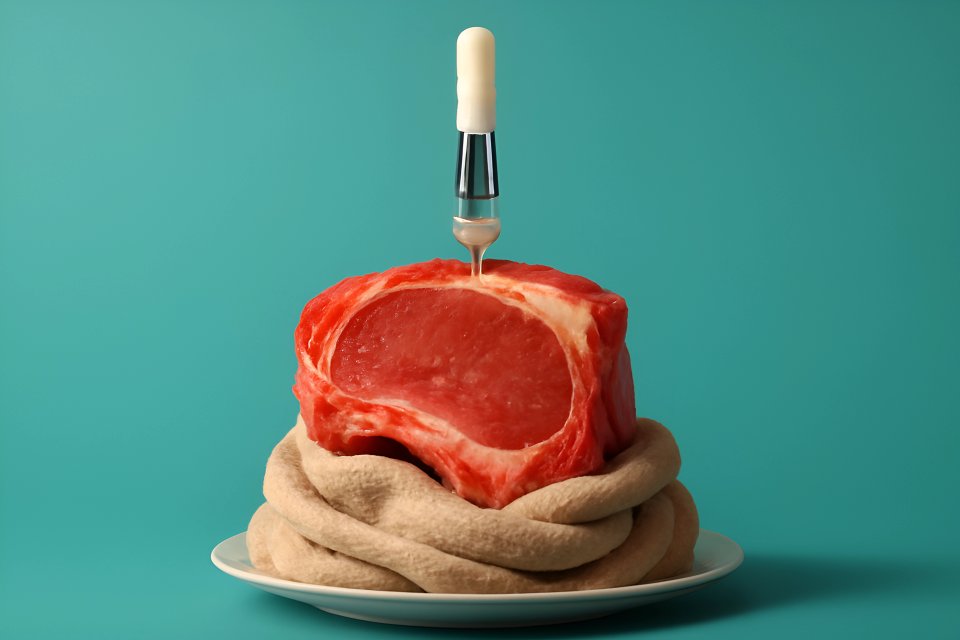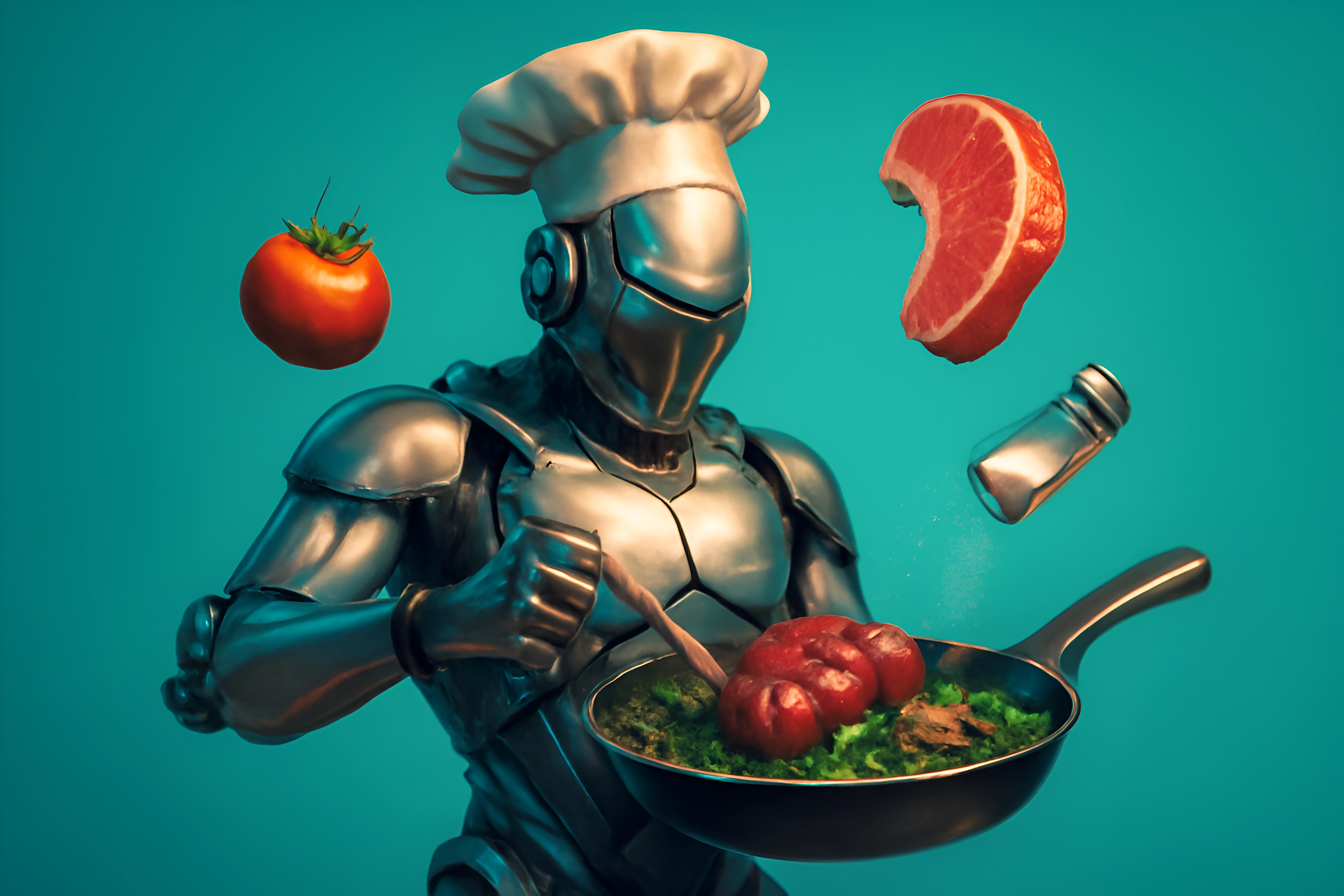
The Busy Person's Dilemma: Fighting Inflammation Without Losing Time
Are you trapped in a vicious cycle? You’re committed to healing your body, crushing inflammation, and reclaiming your energy with the carnivore diet. But your schedule is relentless, and the thought of cooking one more meal after a brutal day feels like a second full-time job. The exhaustion, the brain fog, the persistent aches—they’re not just symptoms; they’re chains holding you back from the vibrant life you deserve.
You know the mainstream "healthy" recipes are a trap. They’re loaded with complex steps, exotic ingredients, and take hours you simply don’t have. Even on a carnivore diet, it’s dangerously easy to fall into a rut of boring meals or, worse, reach for convenient but less-than-ideal processed options when you’re against the clock. This is where the best intentions crumble under the weight of real life.
Forget the complexity. This guide is your no-nonsense, strategic blueprint for victory. We’re handing you simple, delicious, and powerfully low-inflammatory carnivore recipes designed to fit seamlessly into your packed schedule. This isn’t about adding more stress; it’s about making your healing journey sustainable, effective, and finally, effortless.
Why the Carnivore Diet is a Powerful Tool Against Inflammation
So, why does this work? The carnivore diet isn't just another eating plan; it's a radical act of subtraction. It systematically removes the primary drivers of chronic inflammation that plague the modern diet: sugar, industrial seed oils, processed grains, and most importantly, inflammatory plant compounds like lectins and oxalates. By eliminating these triggers, you stop pouring fuel on the fire and give your body the space it needs to begin healing itself from the inside out.
The results are not just anecdotal; they are being documented in clinical settings. A groundbreaking 2024 case report in Frontiers in Nutrition followed ten patients with Inflammatory Bowel Disease (IBD) who adopted a carnivore-ketogenic diet. The outcome was staggering: every single patient achieved clinical remission and saw a universal reduction in key inflammation markers. This wasn't a minor improvement; it was a life-altering transformation built on a foundation of meat, eggs, and animal fats. To understand why this approach is so uniquely effective, it's helpful to see a comparative analysis of the carnivore diet vs. other low-carb diets for chronic disease management.
This is the core philosophy at HealingCarnivore: radical simplicity delivers radical transformation. You provide your body with the most bioavailable, nutrient-dense foods on the planet—animal products—and get out of its way. Your blood sugar stabilizes, your cells get the building blocks they need for repair, and your immune system can finally stand down. For a deeper look into the science, you can explore these natural approaches to reducing inflammation on a carnivore diet.
The Keys to a Truly Low-Inflammatory Carnivore Approach
Listen closely: not all carnivore eating is created equal. Simply eating meat isn't the full picture. To truly crush inflammation and accelerate your healing, you must be strategic about what you eat and how you prepare it. This is the difference between just getting by and truly thriving.
Sourcing Matters: Choose Your Ingredients Wisely
The quality of your food directly translates to the quality of your health. Prioritizing properly sourced animal products is non-negotiable for a low-inflammatory protocol. For beef and other ruminants, 100% grass-fed and finished is the gold standard. According to Chomps, this simple choice dramatically improves the fatty acid profile, delivering an optimal omega-6 to omega-3 ratio of around 2:1, a stark contrast to the inflammatory 7:1 ratio found in grain-fed beef. This is a critical factor in how grass-fed beef reduces chronic inflammation.
This principle extends across all animal foods. For poultry and pork, always opt for pasture-raised to ensure the animals consumed their natural diet, not one loaded with inflammatory grains and soy. When it comes to seafood, wild-caught fatty fish like salmon, mackerel, and sardines are your best allies, packed with the potent anti-inflammatory omega-3s EPA and DHA. Don't let fear-mongering stop you; by debunking carnivore diet myths about heart health, you can feel confident in choosing these nutrient-dense foods.
Finally, the fats you cook with are just as important. Ditch the industrial seed oils forever and embrace high-quality animal fats. Rendered grass-fed tallow, ghee (clarified butter), and grass-fed butter should be the only fats in your kitchen. They are stable, nutrient-rich, and perfectly aligned with your body's needs, providing the clean energy required for cellular repair and optimal function.
Gentle Cooking Methods to Minimize Irritants
How you cook your meat can either enhance its healing properties or introduce new inflammatory problems. Aggressive, high-heat cooking methods like grilling or charring can create harmful compounds known as Heterocyclic Amines (HCAs) and Polycyclic Aromatic Hydrocarbons (PAHs). These compounds are known irritants and are linked to cellular damage and inflammation.
The solution is to embrace gentle cooking. Methods like slow cooking, braising, baking, and pan-searing at moderate temperatures preserve the nutritional integrity of the meat without creating these inflammatory byproducts. A 2022 study confirmed that lower-temperature cooking is a key strategy for reducing the formation of heterocyclic amines. Think of your slow cooker or a Dutch oven as essential tools in your anti-inflammatory arsenal.
This doesn't mean your food has to be bland or boring. You can still achieve a delicious crust on a steak or crispy skin on chicken thighs without resorting to scorching temperatures. It’s about being mindful and treating your high-quality ingredients with the respect they deserve, ensuring every bite contributes to your healing, not detracts from it.
What to Avoid (Even on Carnivore)
To maximize your results, you must be ruthless in eliminating hidden sources of inflammation. First on the list are processed meats. Conventional bacon, sausages, and deli meats are often loaded with sugar, industrial fillers, and chemical preservatives like nitrates. A 2022 study on nitrites in cured meats confirmed they can form carcinogenic compounds and are associated with elevated inflammatory markers. If you must have them, seek out brands with clean labels containing only meat, salt, and water.
Dairy is another major area for caution. For many people, the A1 casein protein found in conventional milk is highly inflammatory. A pivotal 2016 study showed that consuming A1 dairy can trigger significant gastrointestinal inflammation and discomfort. If you choose to include dairy, opt for high-quality, grass-fed sources that are easier to tolerate, such as ghee (which is nearly pure fat), butter, or products made from A2 dairy.
The best approach is to start with a strict baseline of just meat, salt, and water. This allows your body to reset. After 30-60 days, you can carefully test your tolerance to high-quality dairy or other animal products, but always listen to your body. Your symptoms are your most reliable guide on this journey.
Meal Prep Hacks for the Time-Crunched Carnivore
Success on this diet, especially when you're busy, isn't about willpower; it's about strategy. Meal prep is your secret weapon. It’s the system that guarantees you have delicious, low-inflammatory food ready to go, eliminating decision fatigue and preventing you from making poor choices when you’re tired and hungry.
The Batch-Cooking Blueprint
The cornerstone of carnivore meal prep is batch cooking. Dedicate one or two hours on a Sunday to cook large quantities of foundational meats. As recommended in this carnivore diet meal plan for beginners, browning 3-4 pounds of ground beef, slow-cooking a large chuck roast until it's falling apart, or baking a dozen chicken thighs creates a surplus of ready-to-eat protein for the week ahead.
This simple act transforms your week. Instead of starting from scratch every night, you’re just reheating and assembling. That ground beef can become a quick bowl for lunch, a topping for carnivore nachos, or part of a scramble. The shredded beef is perfect on its own or mixed with some tallow for a rich, satisfying meal in minutes.
This isn't about eating the same boring thing every day. It's about creating a foundation of high-quality protein that you can easily adapt. This single habit removes the biggest barrier to consistency: the daily burden of cooking from zero. For more advanced techniques, check out these carnivore meal prep strategies for busy professionals.
The "Component" Method for Quick Assembly
Think of your fridge as a build-your-own-bowl station. The component method involves prepping individual ingredients that you can mix and match throughout the week. This gives you variety without requiring you to cook a full recipe every day.
Spend a little time prepping these components: fry up a pound of high-quality bacon and store the strips in the fridge, hard-boil a dozen eggs for a quick snack or meal addition, and pre-form ground beef or pork into burger patties so they are ready to be thrown into a pan.
With these components on hand, a complete, nutrient-dense meal is never more than five minutes away. Grab a handful of shredded beef, a few strips of bacon, and a couple of hard-boiled eggs, and you have a perfect lunch. This method gives you the ultimate flexibility to eat what you’re craving without derailing your progress.
Your Freezer is Your Best Friend
Your freezer is not just for long-term storage; it's an extension of your refrigerator for immediate convenience. Use it to create a library of grab-and-heat meals. Portion out your batch-cooked ground beef, shredded chicken, or chuck roast into individual servings and freeze them.
This is your emergency food supply. When you have an unexpectedly late night at work or simply have zero energy to even think about cooking, you can pull a portion from the freezer and have it ready in minutes. You can also freeze pre-formed burger patties or meatballs, separating them with parchment paper so you can cook them directly from frozen.
This strategy is your insurance policy against failure. It ensures that even on your worst days, you have a better, healthier, and faster option than any takeout could ever provide. It’s about building a system that supports your goals, no matter what life throws at you.
Essential Kitchen Tools
You don't need a kitchen full of fancy gadgets, but a few key tools can make low-inflammatory carnivore cooking almost entirely hands-off. A slow cooker is non-negotiable for turning tough, affordable cuts of meat into tender, flavorful meals with just minutes of prep. An Instant Pot or pressure cooker can achieve similar results in a fraction of the time.
The air fryer is another game-changer for busy people. As shown in this video on easy slow cooker and air fryer meals, you can cook steaks, chicken wings, bacon, or pork belly to crispy perfection in 15-20 minutes with minimal cleanup. It’s the perfect tool for getting that satisfying texture without the hassle of deep-frying or constant monitoring.
Investing in these tools automates the cooking process, freeing up your time and mental energy. They do the work for you, ensuring you can stick to your healing protocol even on the most demanding of days. They are a small investment that pays massive dividends in your health and time.
5 Quick & Healthy Carnivore Recipes to Reduce Inflammation
Here are five go-to recipes that are packed with flavor and nutrients but require minimal time and effort. Each one is designed with low-inflammatory principles in mind, using high-quality ingredients and simple preparation methods. For even more ideas, explore our ultimate carnivore recipes for inflammation reduction.
Recipe 1: The 10-Minute "Inflammation Buster" Ground Beef Bowl
- Focus: Speed, nutrient density, and simplicity.
- Prep/Cook Time: 10 minutes.
- Ingredients: 1 lb grass-fed ground beef, Redmond Real Salt to taste, 1-2 tbsp grass-fed tallow or ghee. Optional: 2 raw, pasture-raised egg yolks stirred in at the end for extra choline and biotin.
- Instructions: Heat tallow or ghee in a skillet over medium heat. Add the ground beef and salt, breaking it up with a spoon. Cook until browned, about 7-8 minutes. Remove from heat and stir in egg yolks, if using, until creamy.
Recipe 2: "Set & Forget" Slow-Cooker Shredded Chuck Roast
- Focus: Hands-off cooking for a large batch of versatile protein.
- Prep/Cook Time: 5 minutes prep, 6-8 hours cook.
- Ingredients: 3-4 lb grass-fed chuck roast, Redmond Real Salt, 1 cup high-quality bone broth or water.
- Instructions: Pat the chuck roast dry and season generously with salt on all sides. Place it in the slow cooker, add the bone broth or water, and cook on low for 6-8 hours, or until it shreds easily with a fork.
Recipe 3: 15-Minute Pan-Seared Salmon with Ghee
- Focus: Maximizing anti-inflammatory omega-3 fatty acids.
- Prep/Cook Time: 15 minutes.
- Ingredients: 6 oz wild-caught salmon fillet (skin-on is ideal), Redmond Real Salt, 1 tbsp grass-fed ghee.
- Instructions: Pat the salmon fillet completely dry with a paper towel. Season the flesh side with salt. Heat ghee in a skillet over medium-high heat until it shimmers. Place the salmon skin-side down and press gently for 10 seconds. Cook for 4-6 minutes, until the skin is crispy and releases easily. Flip and cook for another 2-4 minutes until done to your liking.
Recipe 4: No-Fuss Baked Chicken Thighs
- Focus: An easy, affordable, and delicious hands-off meal with crispy skin.
- Prep/Cook Time: 5 minutes prep, 35-40 minutes cook.
- Ingredients: 4-6 pasture-raised, bone-in, skin-on chicken thighs, Redmond Real Salt.
- Instructions: Preheat your oven to 400°F (200°C). Pat the chicken thighs completely dry with paper towels (this is key for crispy skin). Season generously on all sides with salt. Arrange them skin-side up on a baking sheet or in a cast-iron skillet. Bake for 35-40 minutes, or until the skin is golden brown and crispy and the internal temperature reaches 175°F (80°C).
Recipe 5: Quick Carnivore "Sausage" Patties
- Focus: A flavorful breakfast or snack without the additives of commercial sausage.
- Prep/Cook Time: 15 minutes.
- Ingredients: 1 lb pasture-raised ground pork, Redmond Real Salt. Optional: a pinch of ground sage or thyme for those who tolerate herbs.
- Instructions: In a bowl, combine the ground pork and salt (and optional herbs). Mix gently with your hands, but do not overwork the meat. Form into small, thin patties. Cook in a skillet over medium heat for 4-5 minutes per side, until browned and cooked through.
Conclusion: Reclaim Your Health, One Simple Meal at a Time
Let's be clear: eating a powerful, low-inflammatory carnivore diet does not have to be a complicated, time-consuming burden. You've seen the blueprint. The keys to unlocking your health are simple and actionable: prioritize high-quality, properly sourced animal foods, use gentle cooking methods that honor those ingredients, and implement smart preparation strategies that fit your busy life.
You hold the power to end the cycle of inflammation, fatigue, and frustration. These recipes and strategies are not just information; they are tools of empowerment. They are your path to consistency, your defense against overwhelm, and your ticket to reclaiming the vibrant health that is your birthright. Stay the course, trust the process, and never forget that your health is the most valuable asset you will ever own.
What's your go-to quick carnivore meal for a busy day? Share your tips in the comments below to help our community thrive!
Frequently Asked Questions (FAQ)
Q1: Can I use pre-cooked or processed meats like bacon?
A: It's best to be extremely cautious. Most commercial processed meats contain hidden sugars, inflammatory fillers, and preservatives like nitrates that can form harmful compounds during cooking. If you choose to eat them, diligently search for brands with minimal ingredients—ideally just pork, water, and salt—and ensure they are free from added sugars and chemical nitrates or nitrites. When in doubt, prioritize fresh, unprocessed cuts of meat.
Q2: How do I get enough variety on a busy carnivore diet?
A: Variety doesn't have to mean complexity. The easiest way to keep things interesting is to rotate between different animal sources throughout the week. Switch between beef, lamb, fish, chicken, and pork. You can also explore different cuts of the same animal; the taste and texture of a ribeye steak are vastly different from shredded chuck roast or ground beef. Even simple changes like this prevent palate fatigue and ensure a broader nutrient profile.
Q3: Is dairy inflammatory on the carnivore diet?
A: For many people, yes. The A1 casein protein found in most conventional dairy products is a common trigger for inflammation, digestive issues, and skin problems. If you suspect dairy is an issue, the best course of action is to eliminate it completely for at least 30 days. If you decide to reintroduce it, start with high-quality, grass-fed sources that are generally better tolerated, such as ghee (which is almost pure butterfat), butter, or A2 dairy, and carefully monitor how your body responds.




